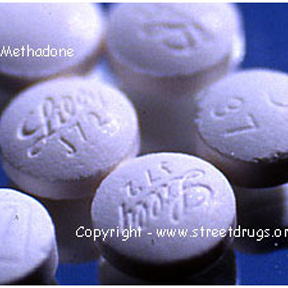
German scientists synthesized methadone during World War II because of a shortage of morphine. Although chemically unlike morphine or heroin, methadone produces many of the same effects. Introduced into the United States in 1947 as an analgesic (Dolophinel), it is primarily used today for the treatment of narcotic addiction. It is available in oral solutions, tablets, and injectable Schedule II formulations, and is almost as effective when administered orally as it is by injection. Methadone's effects can last up to 24 hours, thereby permitting once-a-day oral administration in heroin detoxification and maintenance programs. High-dose methadone can block the effects of heroin, thereby discouraging the continued use of heroin by addicts under treatment with methadone. Chronic administration of methadone results in the development of tolerance and dependence. The withdrawal syndrome develops more slowly and is less severe but more prolonged than that associated with heroin withdrawal. Ironically, methadone used to control narcotic addiction is frequently encountered on the illicit market and has been associated with a number of overdose deaths.